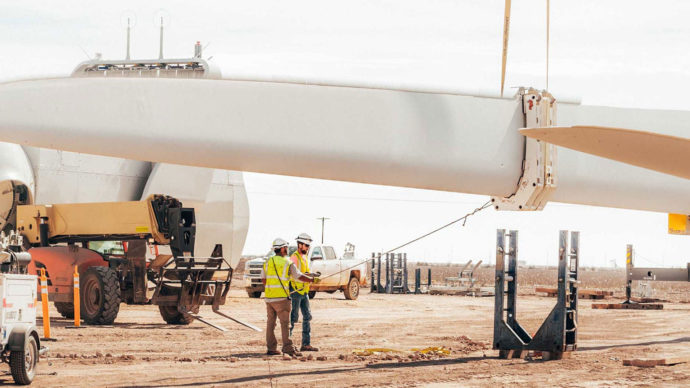Decarbonization has become an essential objective for organizations striving to reduce or eliminate their carbon emissions and make a positive impact on the environment.
While high-profile commitments from large corporations coupled with reports on progress towards these pledges grab headlines, the reality is that decarbonization strategies must be embraced by businesses and individuals alike to effectively impact climate change.
On a global scale, the Paris Agreement outlines that a worldwide effort towards decarbonization is crucial to achieving net zero. In Canada, the 2021 Canadian Net-Zero Emissions Accountability Act represents the country’s commitment to achieving net-zero emissions by 2050 and holds the Government of Canada accountable for its efforts. For organizations new to the concept of decarbonization, the pathway may seem daunting. However, the process can be broken down into manageable steps:
1. Establish a carbon footprint baseline
To kickstart your decarbonization journey, you need to determine a baseline year and calculate the scope 1 and scope 2 emissions for your organization. As a multi-trade service provider, Black & McDonald can support you in this by determining the methodology for baseline calculations and collecting emissions data collection, among other crucial steps.
2. Set reduction targets
Utilize the carbon footprint baseline to establish attainable carbon emission reduction targets that align with local government policies. Black & McDonald recommends adhering to guidelines such as the Net-Zero Standard, which promotes science-based emission reduction targets.
3. Maximize carbon emissions reductions
Identify your organization’s highest-emitting assets and replace them with lower-emitting alternatives. Typically, equipment powered by fossil fuel sources are the highest polluters. Transitioning to electrically powered alternatives, such as electric vehicle fleets and low carbon HVAC systems, can significantly reduce emissions.
- Low carbon HVAC (heating, ventilation, and air conditioning) strategies include:
- Heat pumps
- Heat recovery
- Radiant heating
- Fuel switching and electrification opportunities include:
- Electric vehicles (EVs)
- EV charging stations
- Battery storage
- Electric heating
4. Incorporate energy optimization strategies
Learn to optimize energy consumption in your facility. Tightening your building envelope through measures like improved insulation can reduce the amount of heat lost or gained, decreasing the strain on the building’s HVAC system. Additionally, control solutions offer an automated way to optimize your building’s indoor conditions to reduce operating costs and improve occupant comfort and your building systems’ performance.
- The building envelope includes walls, roof, doors and windows
- Smart buildings and control strategies include:
Building automation system (BAS/BMS)
Smart thermostats
Consumption monitoring through Atrius Building Insights
When necessary, reduce carbon emissions through the installation of more efficient, electrically powered equipment.
5. Take advantage of renewable energy
Renewable energy sources offer an indefinite amount of energy while releasing virtually zero carbon emissions. Integrating a renewable energy source on site will substantially reduce energy costs and emissions while strengthening the facility’s resiliency. Black & McDonald possesses the expertise and supplier relationships needed to determine the most cost-effective mix of renewable energy sources to meet your facility’s specific requirements.
6. Purchase green energy
Opting for green energy, generated through 100% renewable sources, is another effective way to decrease carbon emissions. Black & McDonald can facilitate conversations between your organization and local green energy providers to support this process.
7. Reduce scope 3 emissions
Once you have successfully reduced scope 1 and 2 emissions, it’s time to tackle the more complex scope 3 emissions. Scope 3 emissions typically occur outside of your organization’s primary site of work and may involve changes in employee behaviour or supply chain changes. Scope 3 emission sources that can be targeted include:
- Business travel
- Employee commutes
- Waste generation
- Purchased goods and services
- Material transportation and distribution (supply chain)
- Investments
- End-of-life treatment
- Leased assets
- Embodied carbon (leased facilities)
8. Utilize carbon offsets
In cases where reducing emissions becomes challenging due to limitations in funding or available technology, purchasing carbon offsets is a viable option. Carbon offsets or carbon credits act as a counterweight against your organization’s carbon footprint baseline. Black & McDonald can guide you through the purchasing process and consult with you on the most suitable carbon offsets that align with your organization’s goals.
At Black & McDonald, our mission is to provide a path to successful decarbonization and net-zero energy for our clients and our operations. We embed energy conservation and sustainability best practices into all our business activities, applying innovative solutions to everyday projects, operations, and facilities. Through our commitment to sustainability and integration of cutting-edge technologies, we are enabling a shift to clean energy sources and maximizing the value of performance data generated by assets, people, and processes.
Our Energy and Sustainability Services team at Black & McDonald can provide the right strategy to curtail your energy use by employing the use of technology to find inefficiencies and generate savings.
To learn more, contact Erica Brabon or Kelly Christensen.




